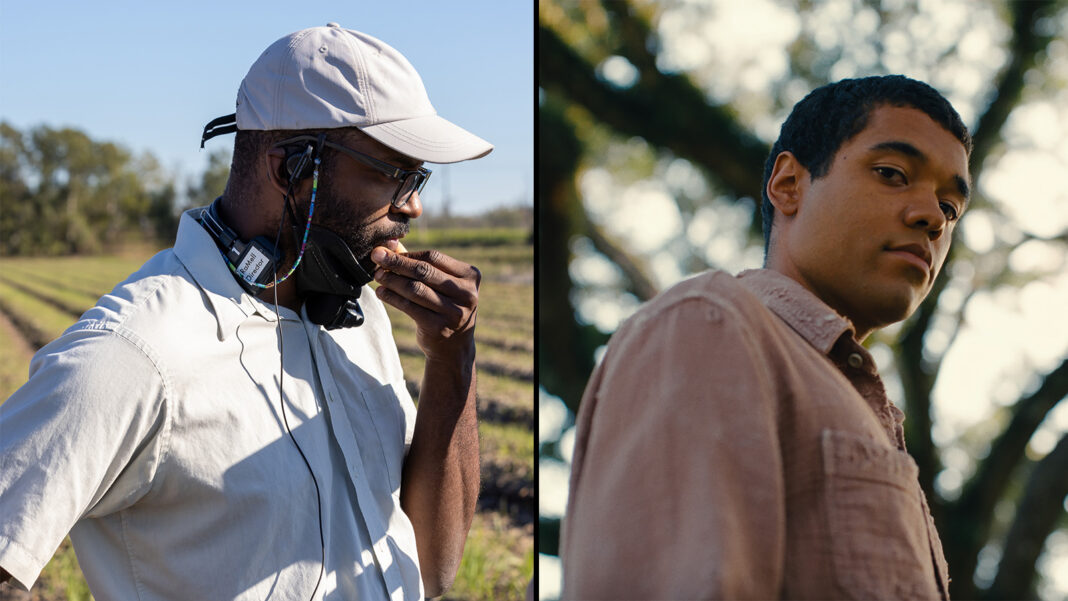Nickel Boys emerges as a powerful cinematic experience in 2024, intertwining violence and warmth in a compelling adaptation of Colson Whitehead’s novel. This film invites audiences into an alternate perspective, urging viewers to embrace a deeper understanding of the human experience. Under the visionary direction of RaMell Ross, the film transcends the ordinary, promising an emotional journey that resonates on multiple levels.
The Story So Far
Set against the harrowing backdrop of the Nickel Academy, a notorious reform school in Florida, Nickel Boys follows the lives of two Black teenagers, Elwood (Ethan Herisse) and Turner (Brandon Wilson). As they navigate the brutal realities of their environment, the film captures fleeting moments of beauty and connection amidst chaos. The narrative unfolds through a first-person lens, presenting a unique and immersive exploration of their struggles and resilience.
An Expansive Yet Accessible Experience
RaMell Ross, known for his Oscar-nominated documentary Hale County This Morning, This Evening, channels his distinct cinematic style into Nickel Boys. This film is not only a narrative but a collection of poignant moments, each framed with artistic intent. Ross describes it as “not intimate, but close,” inviting viewers to engage deeply with the characters’ experiences.
Visual Storytelling at Its Best
The film’s visual texture is a testament to Ross’ background in photography. Working alongside cinematographer Jomo Fray, Ross meticulously captures the details that breathe life into each scene—from the subtleties of hands and faces to the swaying trees above. This attention to detail creates a rich tapestry that enhances the storytelling rather than distracting from it.
Powerful Performances
Performances in Nickel Boys are nothing short of extraordinary. Aunjanue Ellis-Taylor brings warmth and comfort, while Hamish Linklater embodies wrath. Fred Hechinger walks the delicate line between the two extremes. Herisse and Wilson shine as Elwood and Turner, their chemistry representing the essence of youth, memory, and the universal experiences of Black teenagers throughout American history. The film resonates with its distinctly American contradictions, encapsulating both beauty and brutality.
Adapting a Beloved Novel
Written by Ross and Joslyn Barnes, the adaptation of Nickel Boys respects the source material while expanding its narrative scope. The film places its characters in relatable environments—a classroom, a field, a bar—imbuing each location with significance and emotional weight. The film’s nuanced portrayal allows for a deeper exploration of themes that resonate with contemporary audiences.
A Conversation with RaMell Ross
In the lead-up to the New York Film Festival premiere, Ross sat down for an insightful conversation, revealing the thought process behind his directorial choices. His commitment to crafting a textured image is evident, as he strives to evoke rich, layered visuals that draw the viewer in.
Capturing Textures Through the Lens
Ross explains his shooting philosophy, emphasizing his desire for richness in every frame. He collaborates closely with Fray, aiming for a visual style reminiscent of his large-format photography. This dedication to texture enhances the film’s emotional impact, allowing audiences to feel the weight of the characters’ experiences.
The Power of Shadows
Ross’s use of shadows adds depth to the film’s visual language. He reflects on the significance of shadows as more than mere absence of light, seeing them as a metaphor for memory and identity. This layered approach enriches the narrative, inviting viewers to engage with the deeper themes at play.
Conclusion
Nickel Boys is a profound exploration of resilience, identity, and the complexities of the human experience. Ross’s masterful direction, combined with powerful performances and a rich visual aesthetic, creates a cinematic experience that lingers long after the credits roll. As audiences delve into the world of Elwood and Turner, they are reminded of the universality of their struggles and the beauty found within the harshest realities.
Frequently Asked Questions
1. What is Nickel Boys about?
The film follows two Black teenagers in a reform school, exploring their struggles and resilience amidst a backdrop of violence and warmth.
2. Who directed Nickel Boys?
RaMell Ross, known for his documentary work, directed the film, bringing a unique visual storytelling approach.
3. Is Nickel Boys based on a true story?
While it is an adaptation of Colson Whitehead’s novel, it reflects the real-life experiences of individuals in reform schools in America.
4. What themes are explored in the film?
The film delves into themes of identity, resilience, and the complexities of the human experience, particularly within the context of American history.
5. How does the cinematography contribute to the film?
The cinematography captures rich textures and details, enhancing the emotional impact and allowing viewers to engage deeply with the narrative.
6. Are the performances noteworthy?
Yes, the performances by the cast, especially Ethan Herisse and Brandon Wilson, are highly praised for their depth and authenticity.
7. What makes Nickel Boys unique?
The film’s unique approach to storytelling, blending poetic visuals with a powerful narrative, sets it apart from conventional adaptations.
8. When was Nickel Boys released?
Nickel Boys premiered at the New York Film Festival in 2024 and is currently in theaters.
9. Can I watch Nickel Boys on streaming platforms?
The film is expected to be available on various streaming platforms following its theatrical release; check platforms like Prime Video and Netflix for updates.
10. What is the overall reception of the film?
The film has received critical acclaim for its direction, performances, and emotional depth, resonating with audiences globally.
Tags: Nickel Boys, RaMell Ross, Colson Whitehead, film review, cinematic experience, Black cinema, adaptation, New York Film Festival

